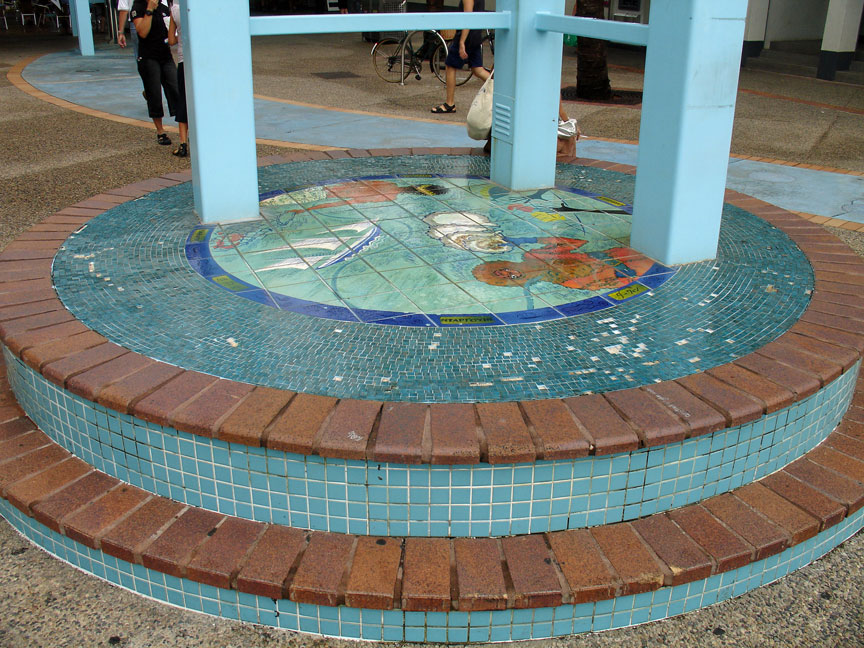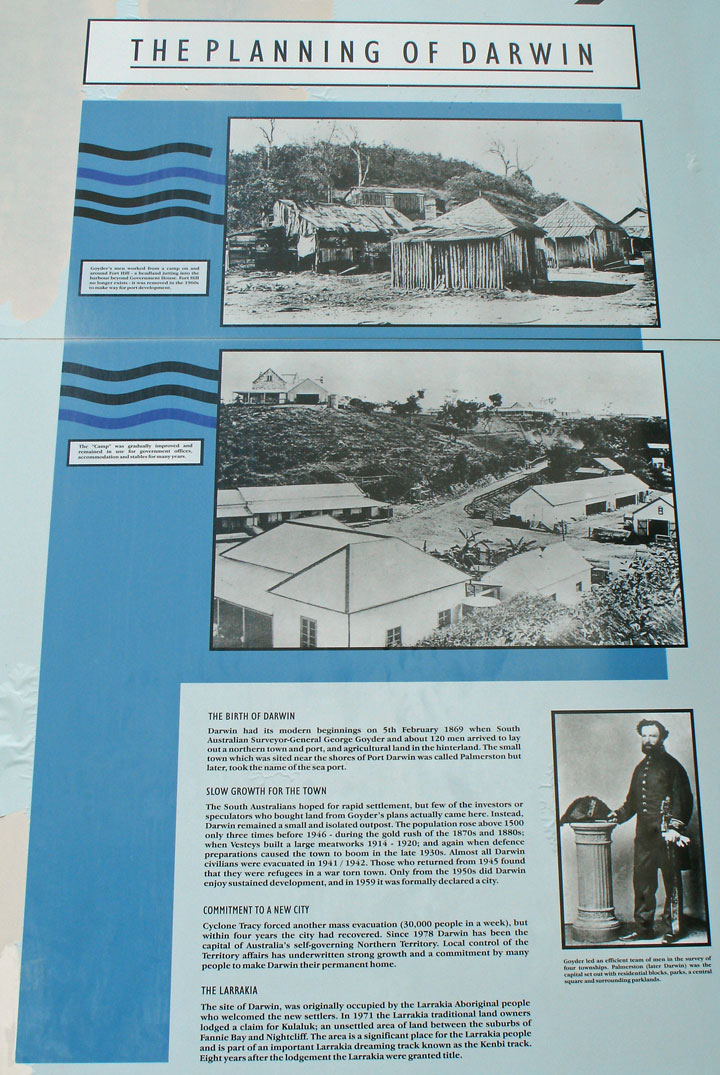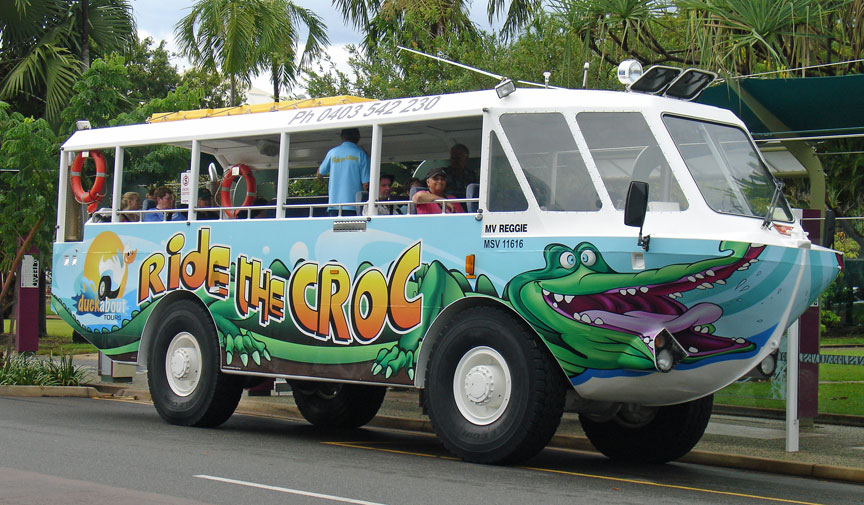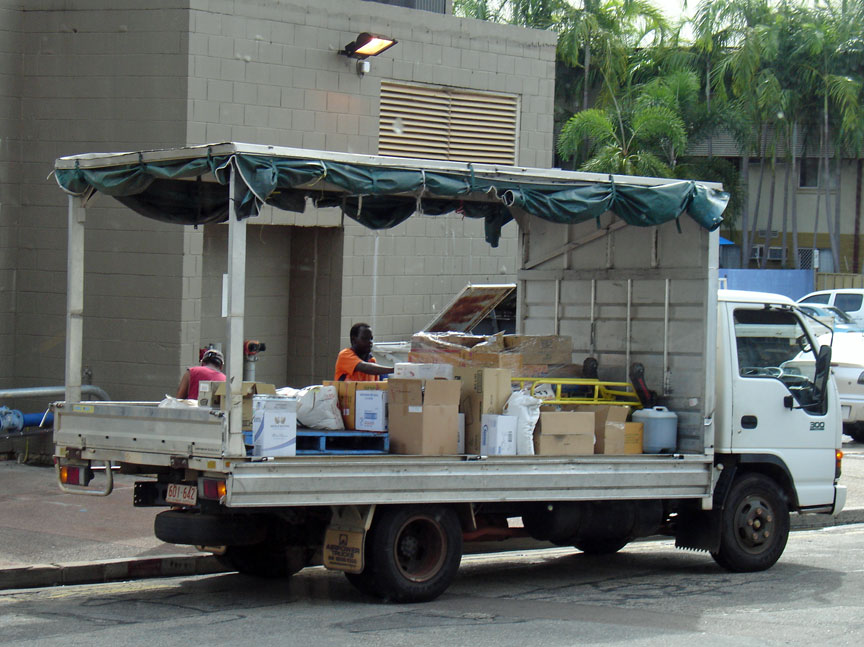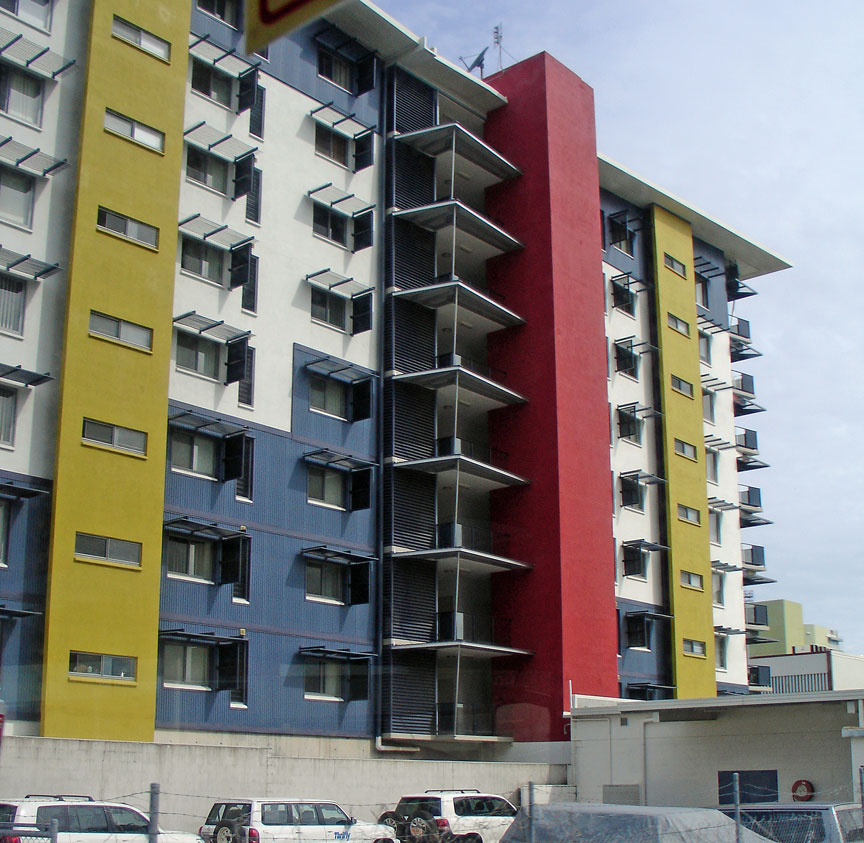

Darwin
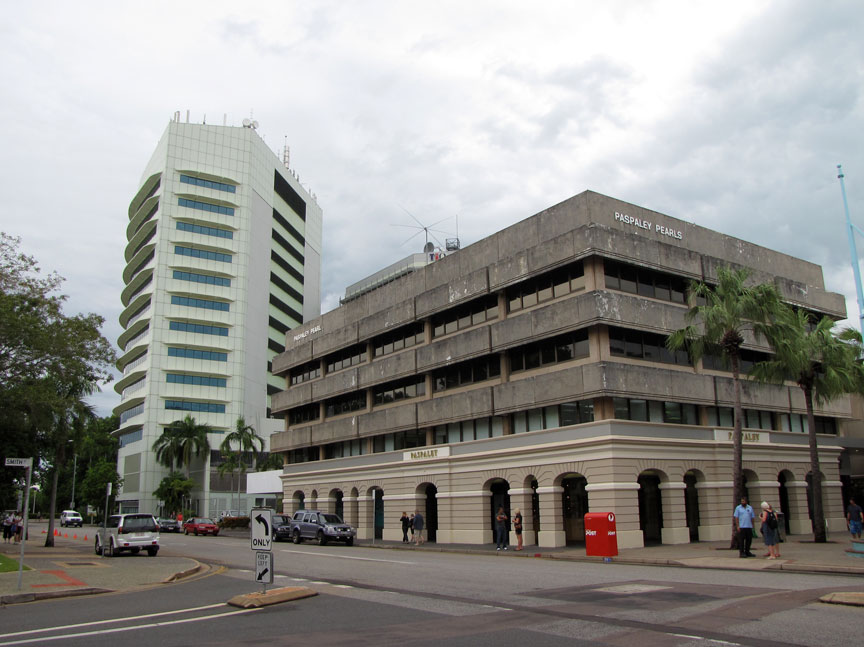
Darwin
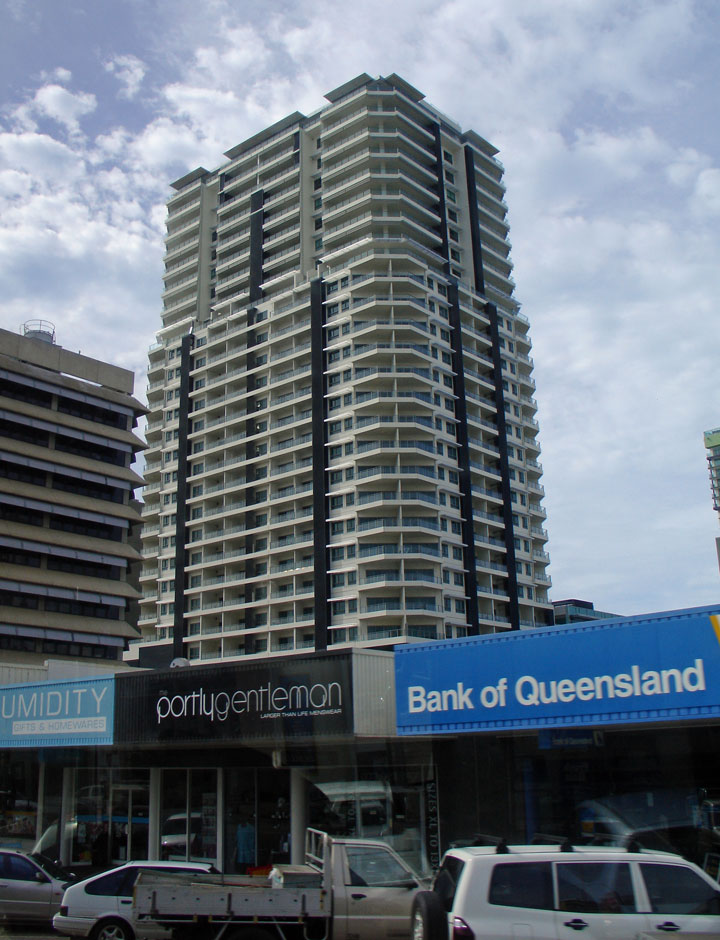
Darwin is the capital city of the Northern Territory, Australia. Situated on the Timor Sea, Darwin has a population of 124,800, making it by far the largest and most populated city in the sparsely populated Northern Territory, but the least populous of all Australia's capital cities. It is the smallest and most northerly of the Australian capital cities, and acts as the Top End's regional center.
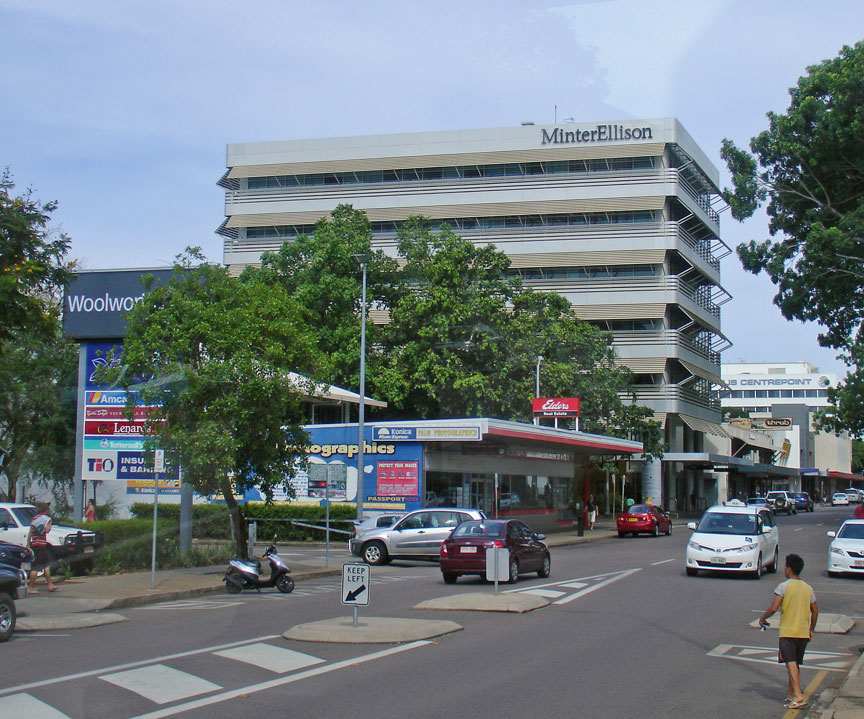
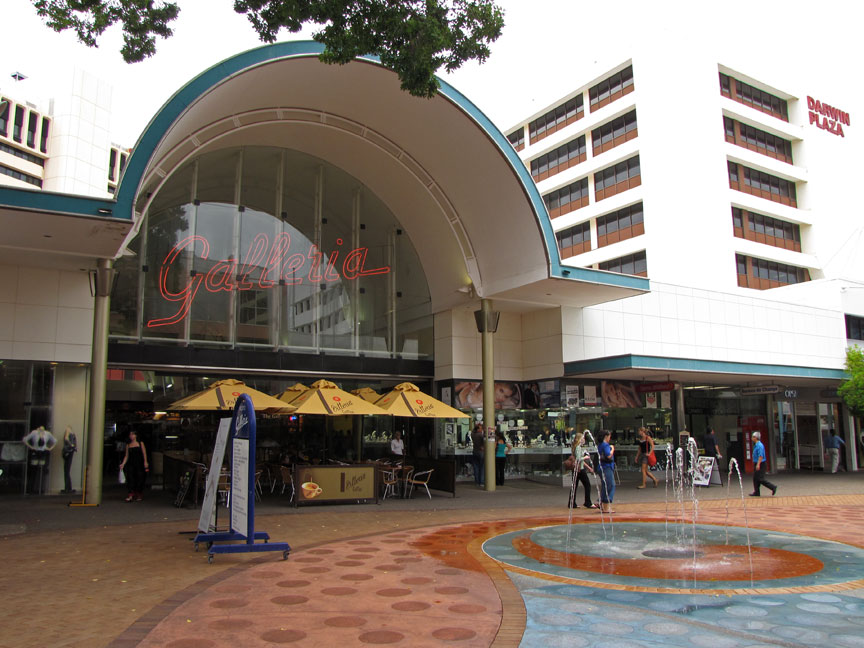
Darwin has grown from a pioneer outpost and small port into one of Australia's
most modern and multicultural cities. Its proximity to Asia makes it an
important Australian gateway to countries such as Indonesia and East Timor. The
Stuart Highway begins in Darwin, ending at Port Augusta in South Australia.

The city itself is built on a low bluff overlooking the harbor. Its suburbs
spread out over some area, beginning at Lee Point in the north and stretching to
Berrimah in the east — past Berrimah, the Stuart Highway goes on to Darwin's
satellite city, Palmerston, and its suburbs.
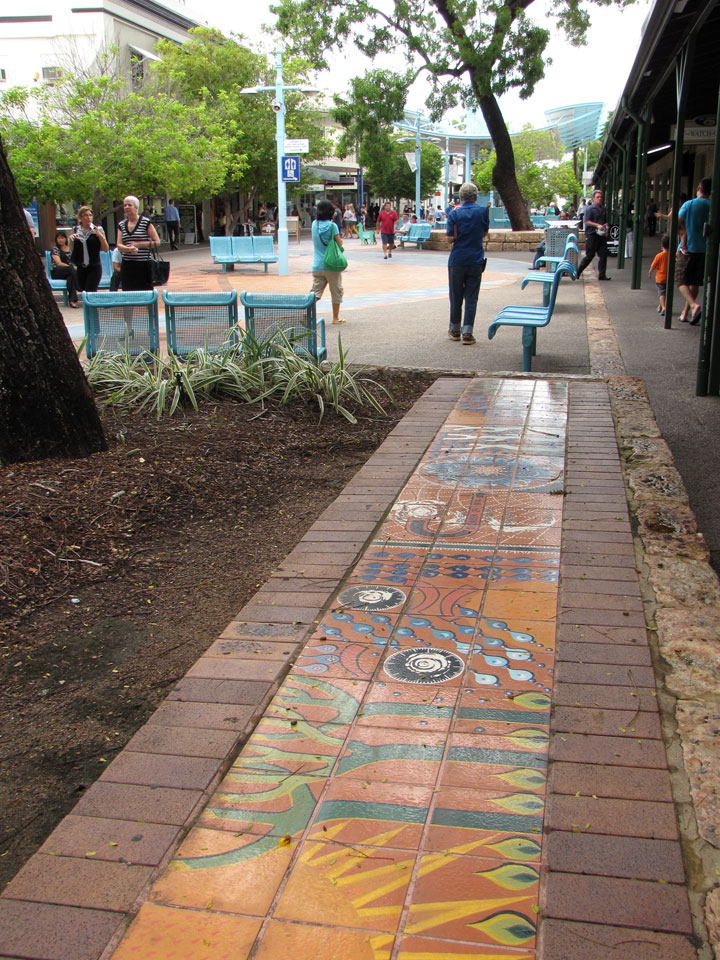
The region, like the rest of the Top End, has a tropical climate, with a wet
season and a dry season. It receives heavy rainfall during the Wet, and is
well-known for its spectacular lightning.
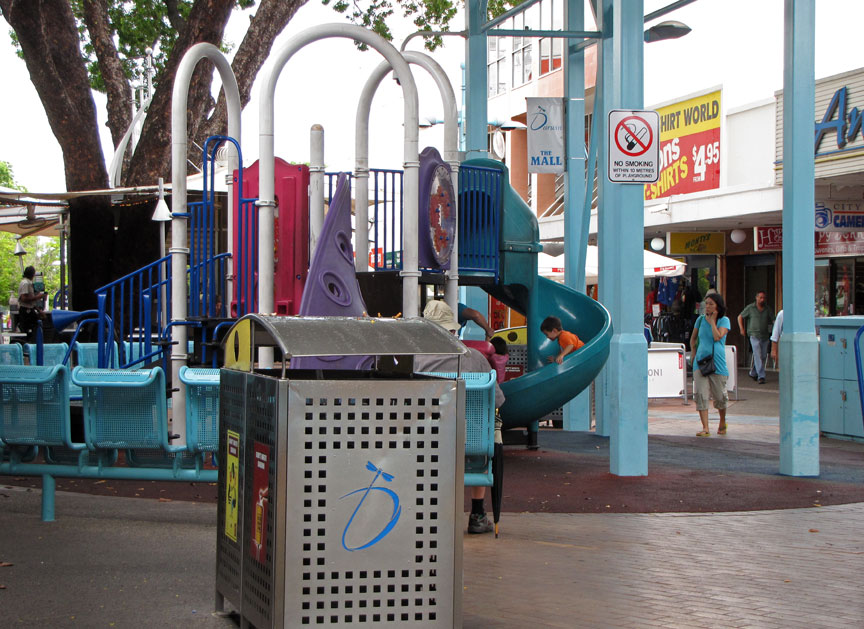
The original inhabitants of the greater Darwin area are the Larrakia people. On
9 September 1839, HMS Beagle sailed into Darwin harbor during its surveying of
the area. John Clements Wickham named the region "Port Darwin" in honour of
former shipmate Charles Darwin (although this was not because of Darwin's
scientific achievements, since those achievements were decades in the future;
rather, Wickham was simply naming locations from a list of former shipmates.)


The Aboriginal people of the Larrakia language group are the first inhabitants
of the greater Darwin area. They had trading routes with Southeast Asia (see
Macassan contact with Australia), and imported goods from as far afield as South
and Western Australia. Established songlines penetrated throughout the country,
allowing stories and histories to be told and retold along the routes.
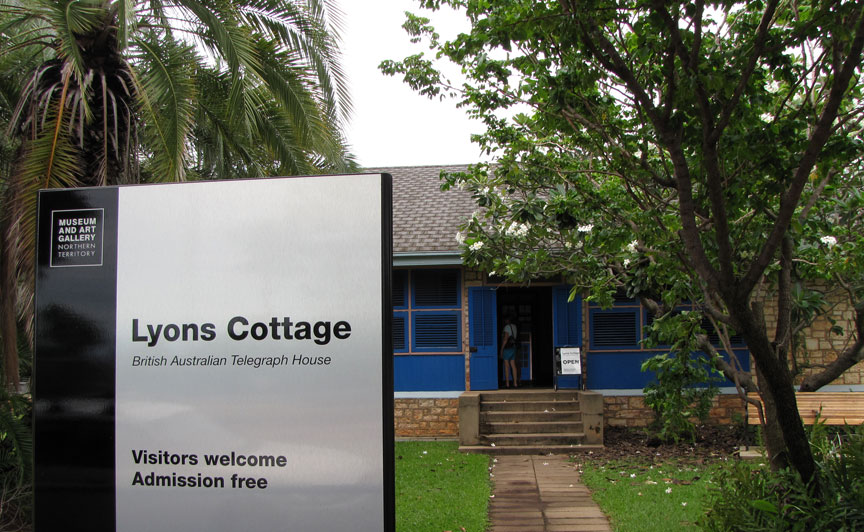
The Dutch visited Australia's northern coastline in the 1600s, and created the
first European maps of the area. This accounts for the Dutch names in the area,
such as Arnhem Land and Groote Eylandt.
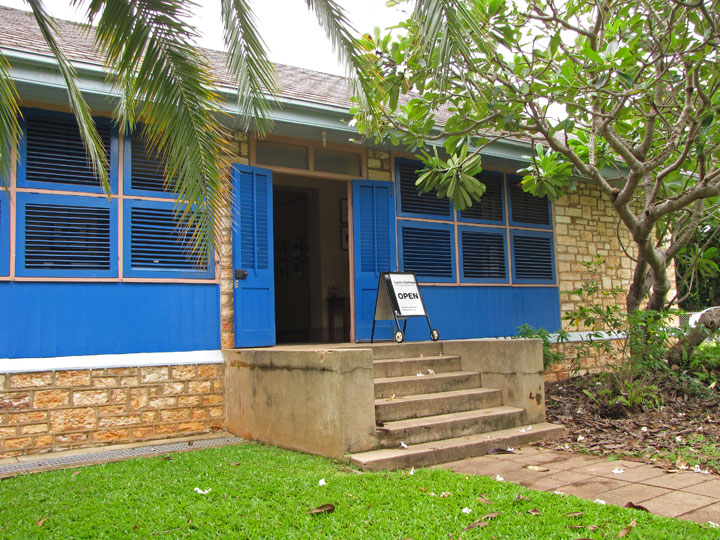
Lyons Cottage
The first British person to see Darwin harbor appears to have been Lieutenant John Lort Stokes of HMS Beagle on 9 September 1839. The ship's captain, Commander John Clements Wickham, named the port after Charles Darwin, the British naturalist who had sailed with them both on the earlier second expedition of the Beagle.
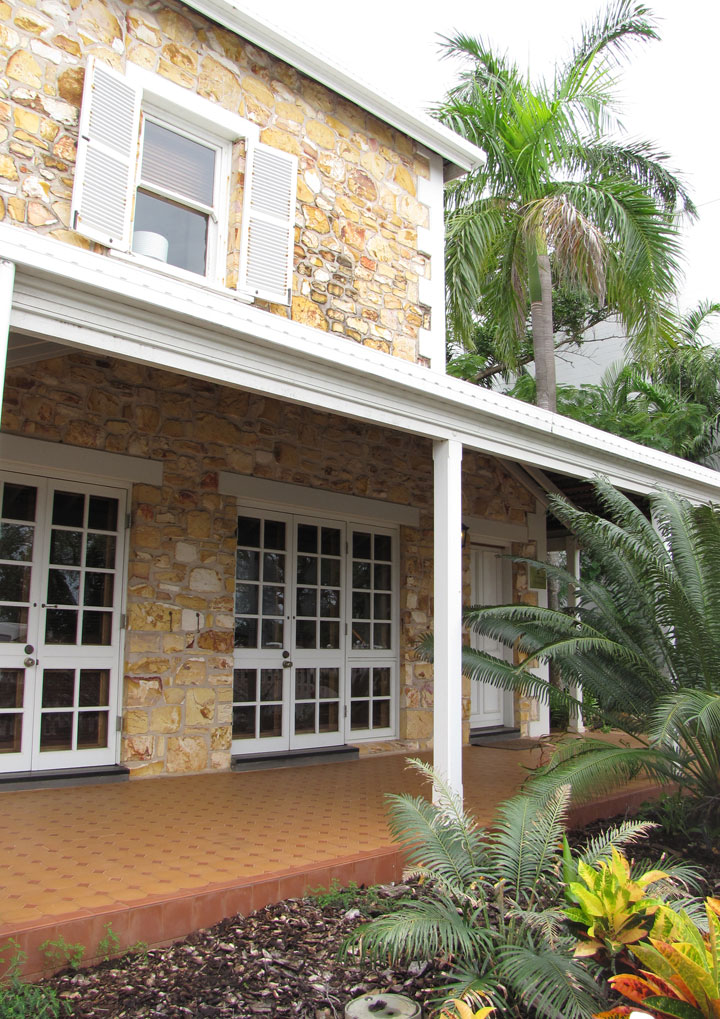
In the early 1870s, Darwin felt the effects of a gold rush at Pine Creek after
employees of the Australian Overland Telegraph Line found gold while digging
holes for telegraph poles.

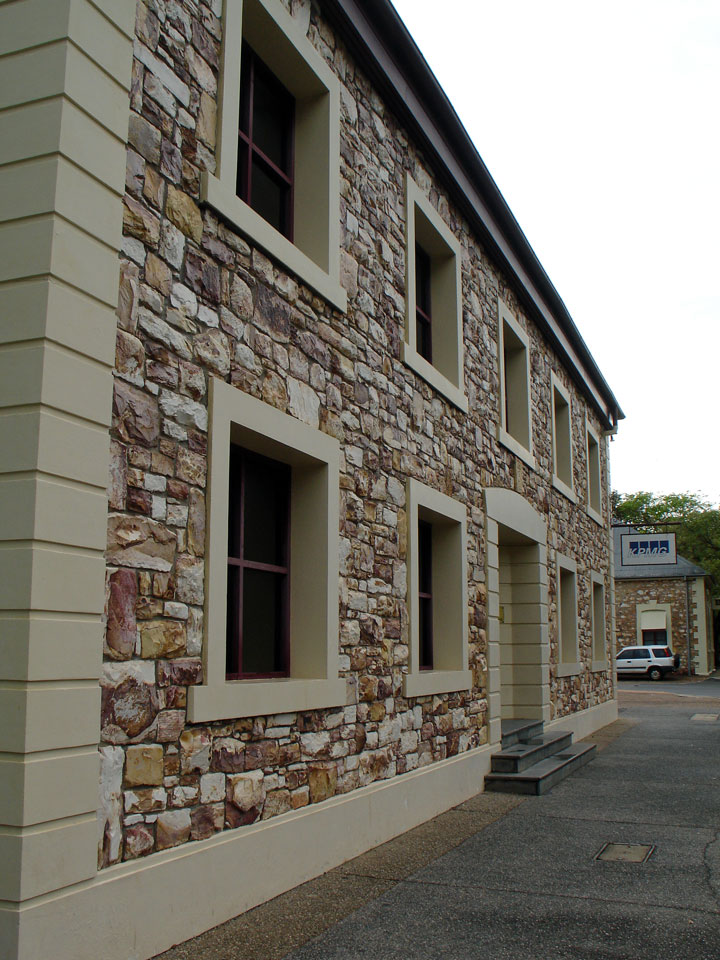
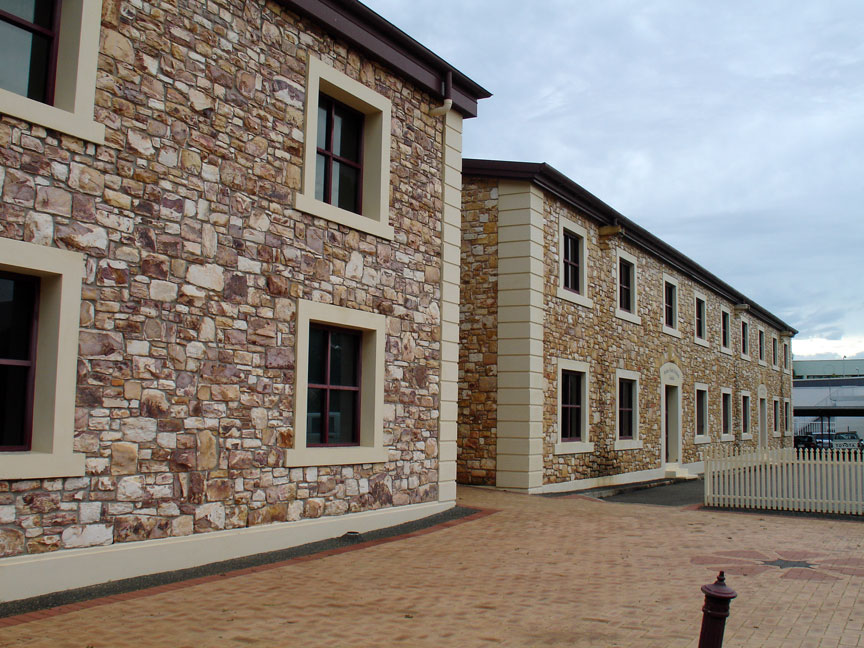
In early 1875, Darwin's European population had grown to approximately 300
because of the gold rush. On 17 February 1875, the SS Gothenburg left Darwin en
route for Adelaide. Amongst the approximately 88 passengers and 34 crew
(surviving records vary) were government officials, circuit court judges, Darwin
residents taking their first furlough and miners. While travelling south along
the north Queensland coast, the Gothenburg encountered a cyclone-strength storm
and was wrecked on a section of the Great Barrier Reef. Only 22 men survived,
while between 98 and 112 people perished. Many passengers who perished were
Darwin residents and news of the tragedy severely affected the small community,
reportedly taking several years to recover.
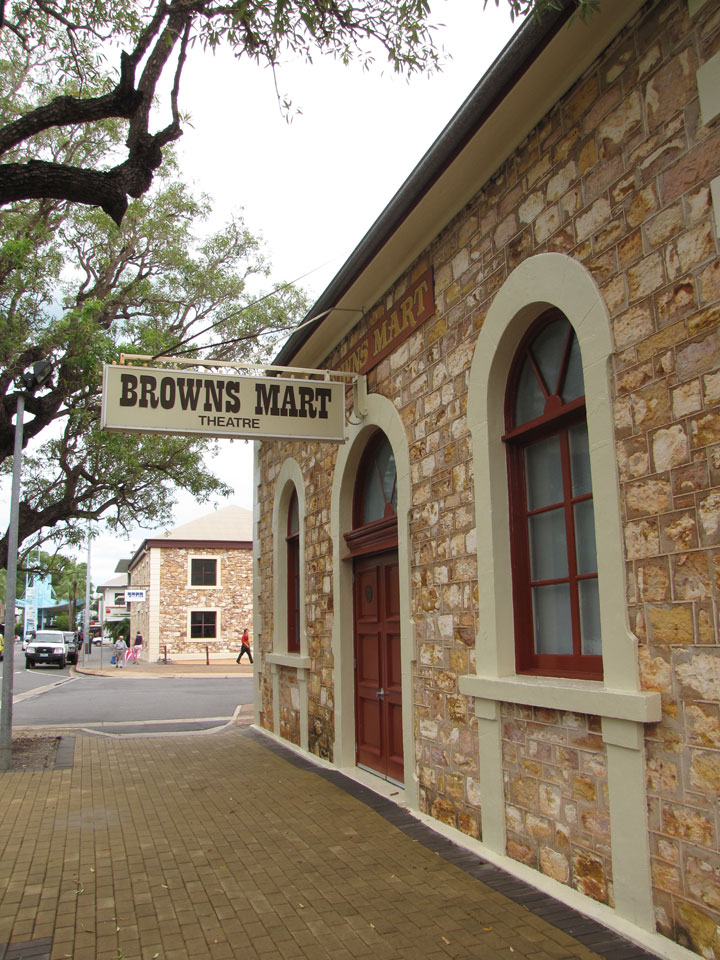
Brown's Mart Theatre
The Northern Territory was initially settled and administered by South Australia, until its transfer to the Commonwealth in 1911. On 5 February 1869, George Goyder, the Surveyor-General of South Australia, established a small settlement of 135 people at Port Darwin. Goyder named the settlement Palmerston, after the British Prime Minister Lord Palmerston. In 1870, the first poles for the Overland Telegraph were erected in Darwin, connecting Australia to the rest of the world. The discovery of gold at Pine Creek in the 1880s further boosted the young colony's development. Upon Commonwealth administration in 1911, Darwin became the city's official name.
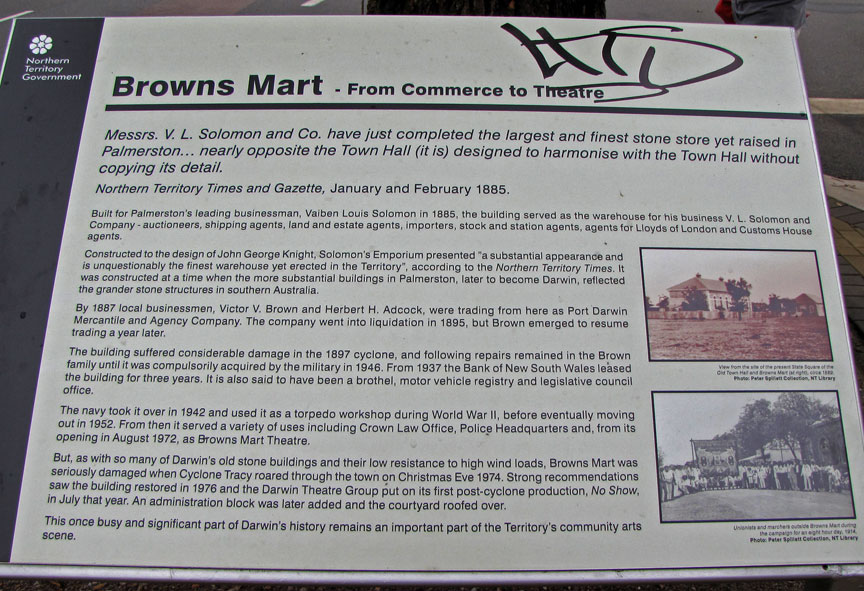

The period between 1911 and 1919 was filled with political turmoil, particularly
with trade union unrest, which culminated on 17 December 1918. Led by Harold
Nelson, some 1000 demonstrators marched to Government House at Liberty Square in
Darwin where they burnt an effigy of the Administrator of the Northern Territory
John Gilruth and demanded his resignation. The incident became known as the
'Darwin Rebellion'. Their grievances were against the two main Northern
Territory employers; Vestey’s Meatworks and the Commonwealth of Australia. Both
Gilruth and the Vestey company left Darwin soon afterwards.
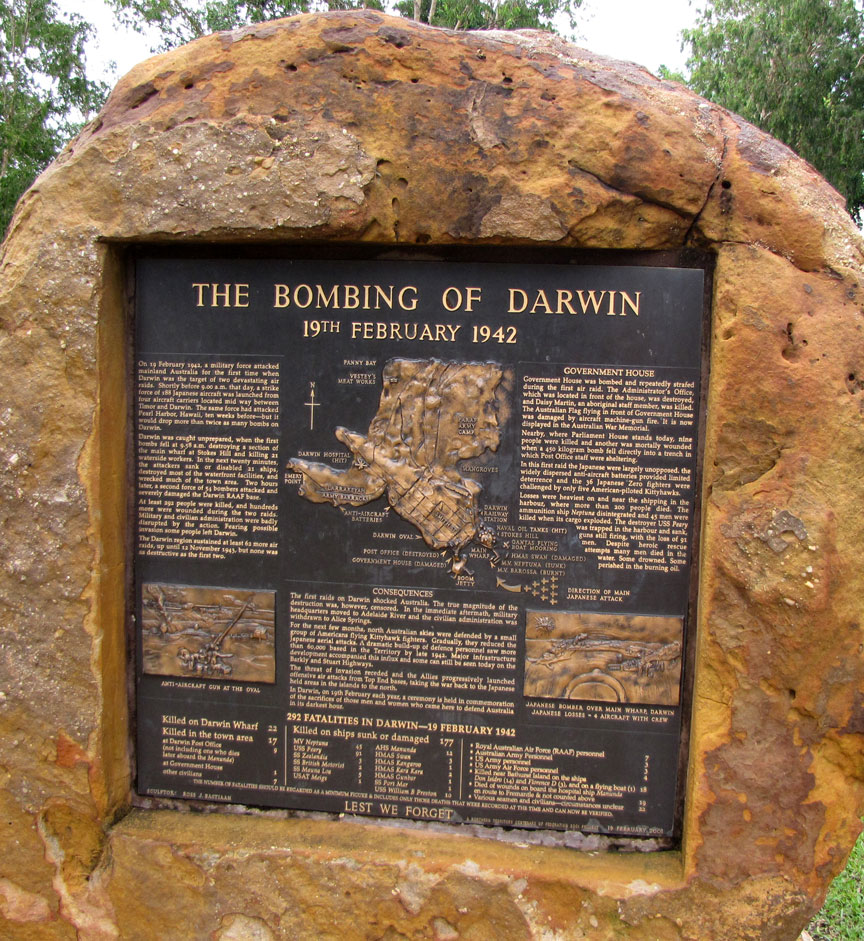
Memorial to the 1942 air raids on the city.
Around 10,000 Allied troops arrived in Darwin in the early 1940s at the outset of World War II, in order to defend Australia's northern coastline. On 19 February 1942 at 0957, 188 Japanese warplanes attacked Darwin in two waves. It was the same fleet that had bombed Pearl Harbor, though a considerably larger number of bombs were dropped on Darwin than on Pearl Harbor. The attack killed at least 243 people and caused immense damage to the town. These were by far the most serious attacks on Australia in time of war, in terms of fatalities and damage. They were the first of many raids on Darwin.

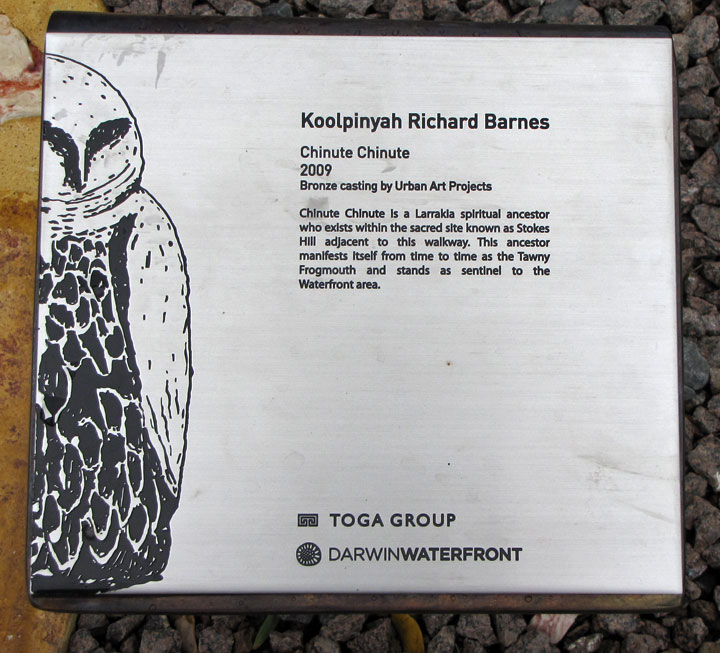
Despite this major attack, Darwin's development was furthered considerably
during the war, with sealed roads constructed connecting the region to Alice
Springs in the south and Mount Isa in the south-east, and Manton Dam built in
the south to provide the city with water. On Australia Day (26 January) 1959,
Darwin was granted city status.
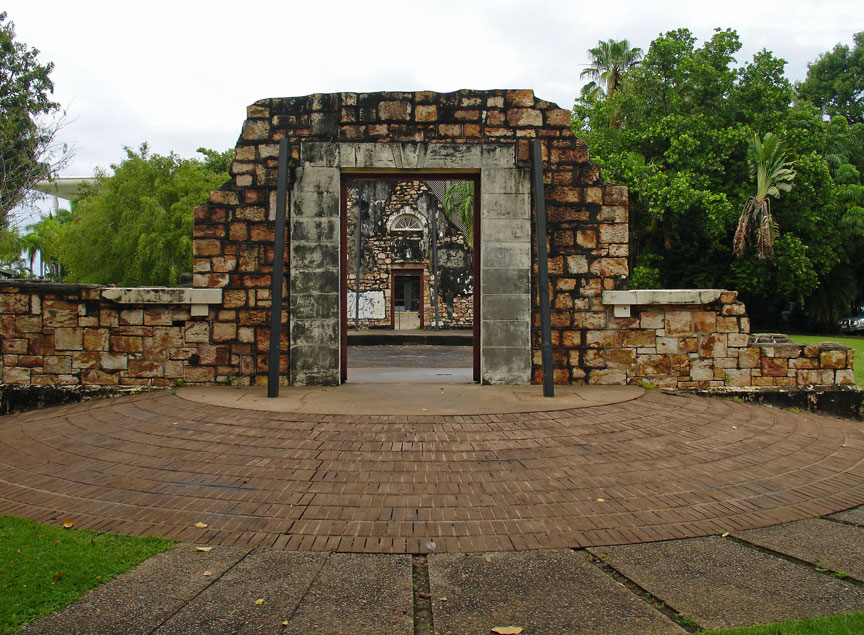
Remains of Palmerston Town Hall, destroyed by Cyclone Tracy
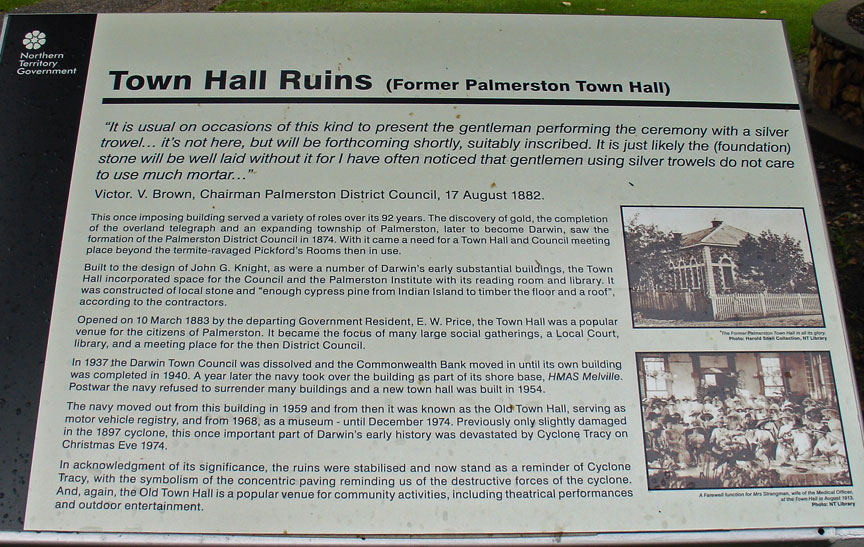
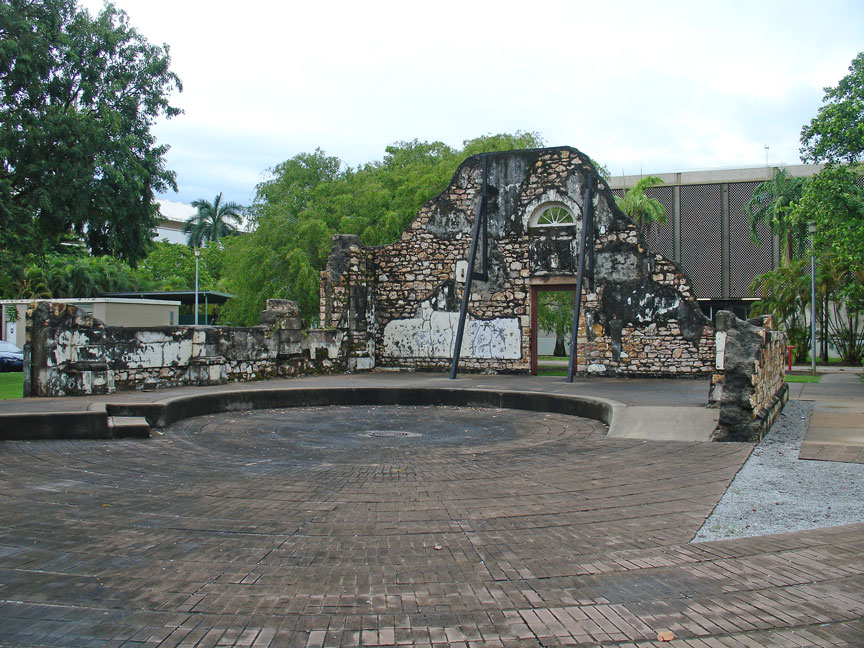
On 25 December 1974, Darwin was struck by Cyclone Tracy, which killed 71 people
and destroyed over 70% of the town's buildings, including many old stone
buildings such as the Palmerston Town Hall, which could not withstand the
lateral forces generated by the strong winds. After the disaster, 30,000 people
of a then population of 43,000 were evacuated, in what turned out to be the
biggest airlift in Australia's history. The town was subsequently rebuilt with
newer materials and techniques during the late 1970s by the Darwin
Reconstruction Commission, led by former Brisbane Lord Mayor Clem Jones. A
satellite city of Palmerston was built 20 km (12 mi) south of Darwin in the
early 1980s.
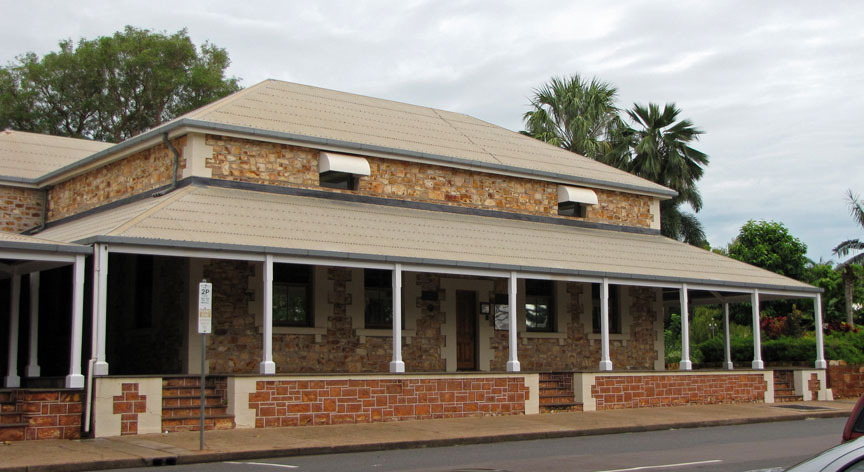
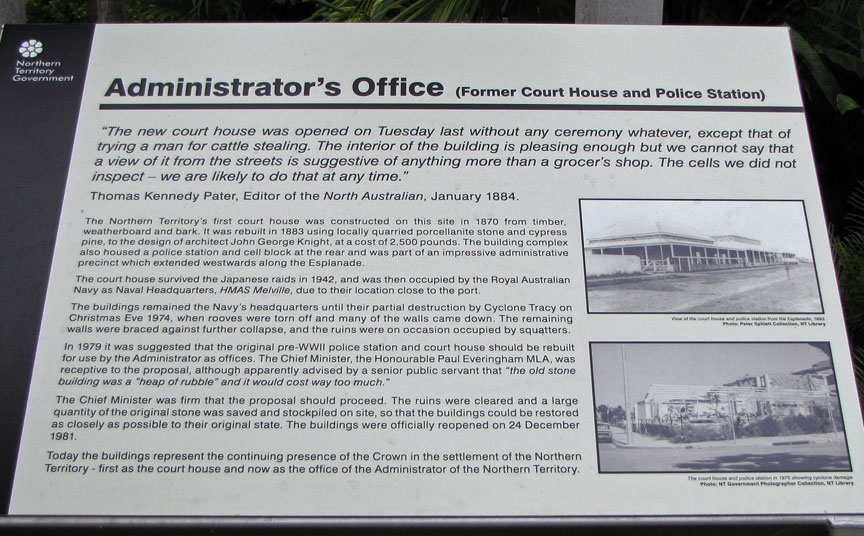
On 17 September 2003, the Adelaide-Darwin railway was completed.
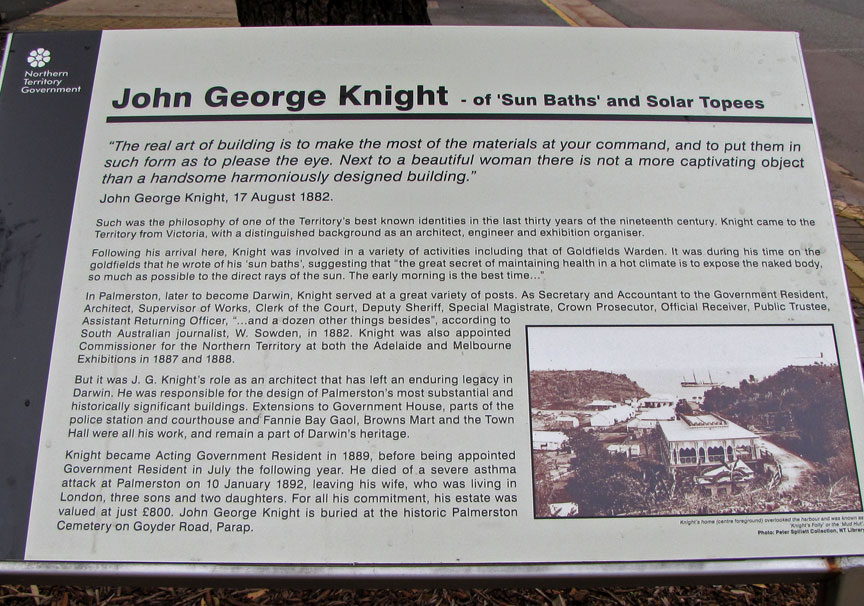
Darwin is situated in the Northern Territory, on the Timor Sea. The town proper
is built on a low bluff overlooking Darwin harbour, flanked by Frances Bay to
the east and Cullen Bay to the west. The remainder of the city is flat and
low-lying, and coastal areas are home to recreational reserves, extensive
beaches, and excellent fishing.
Text from Wikipedia
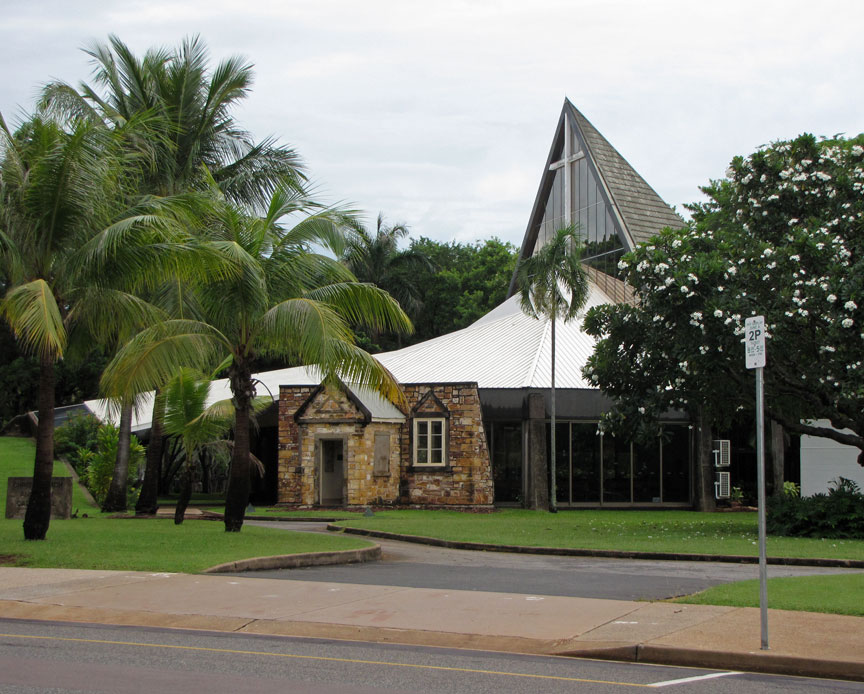
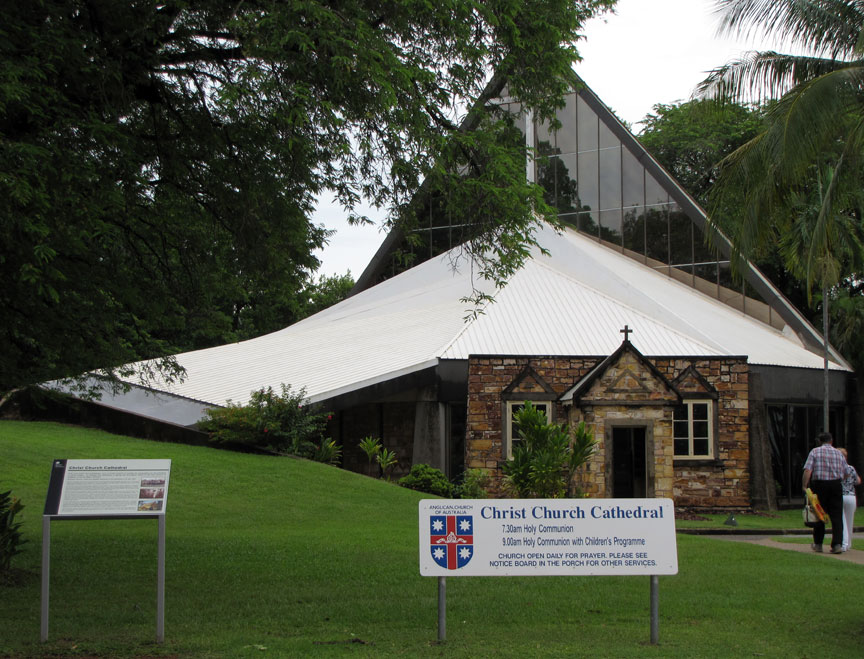
Christ Church Cathedral

